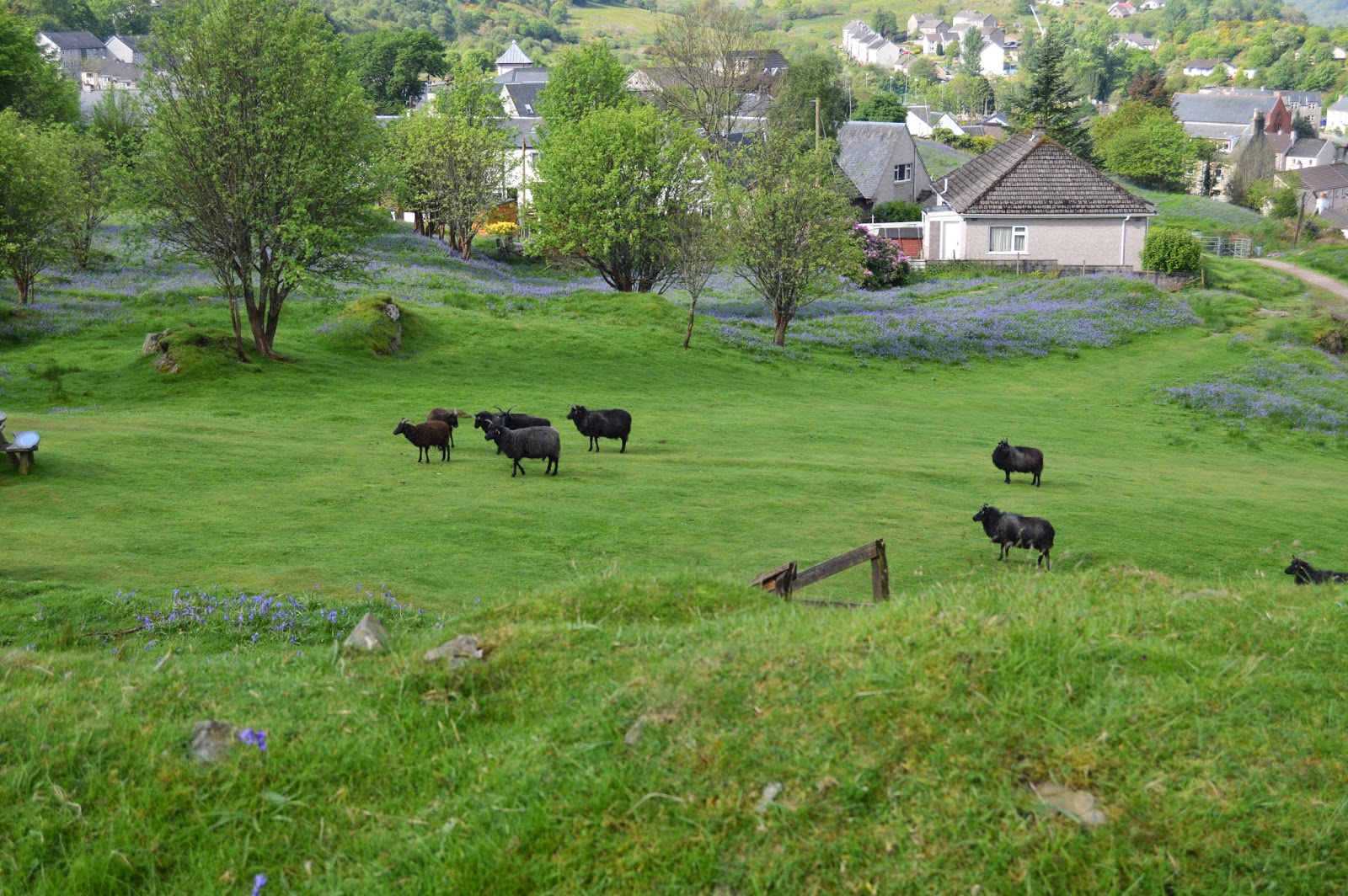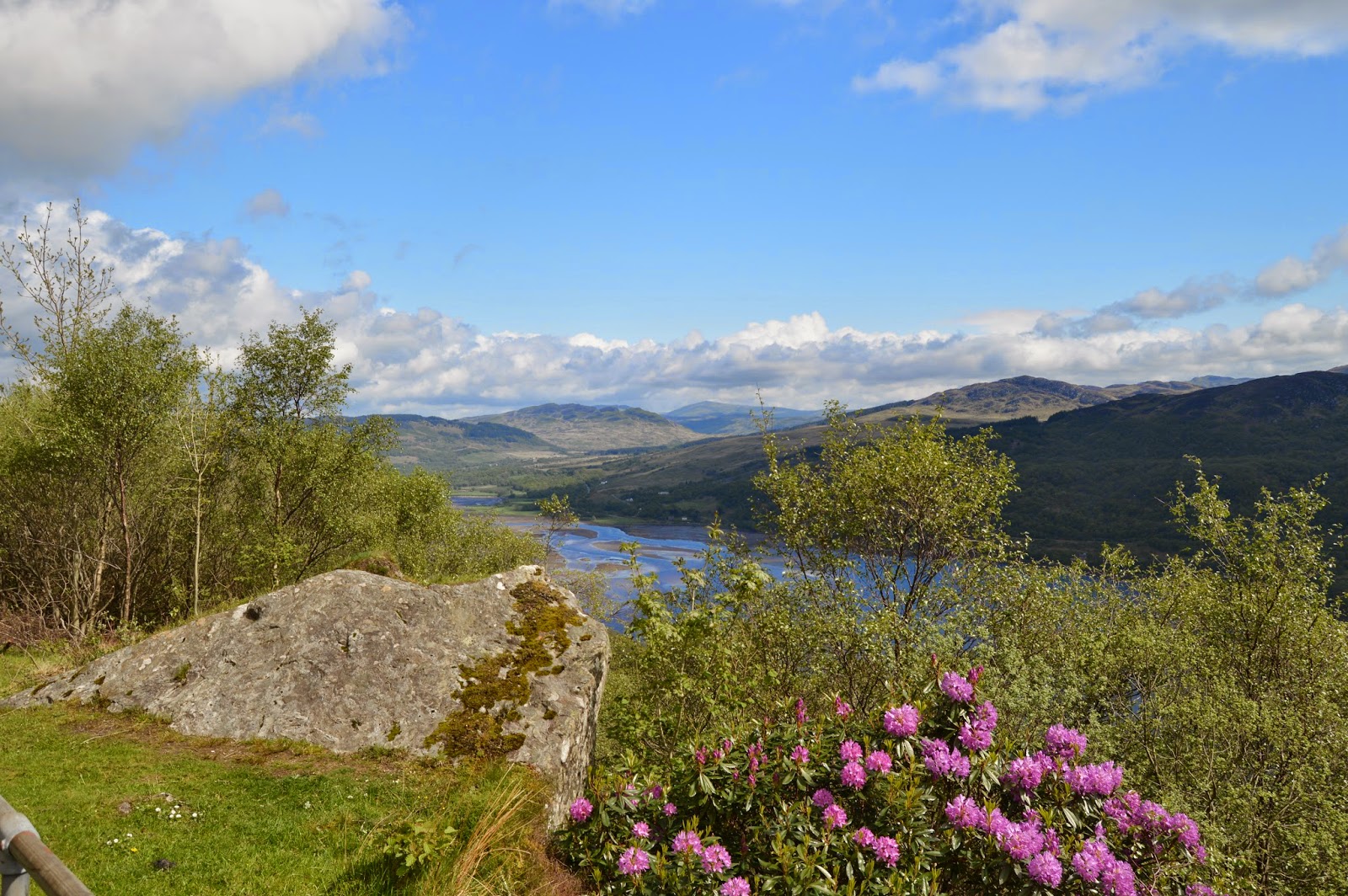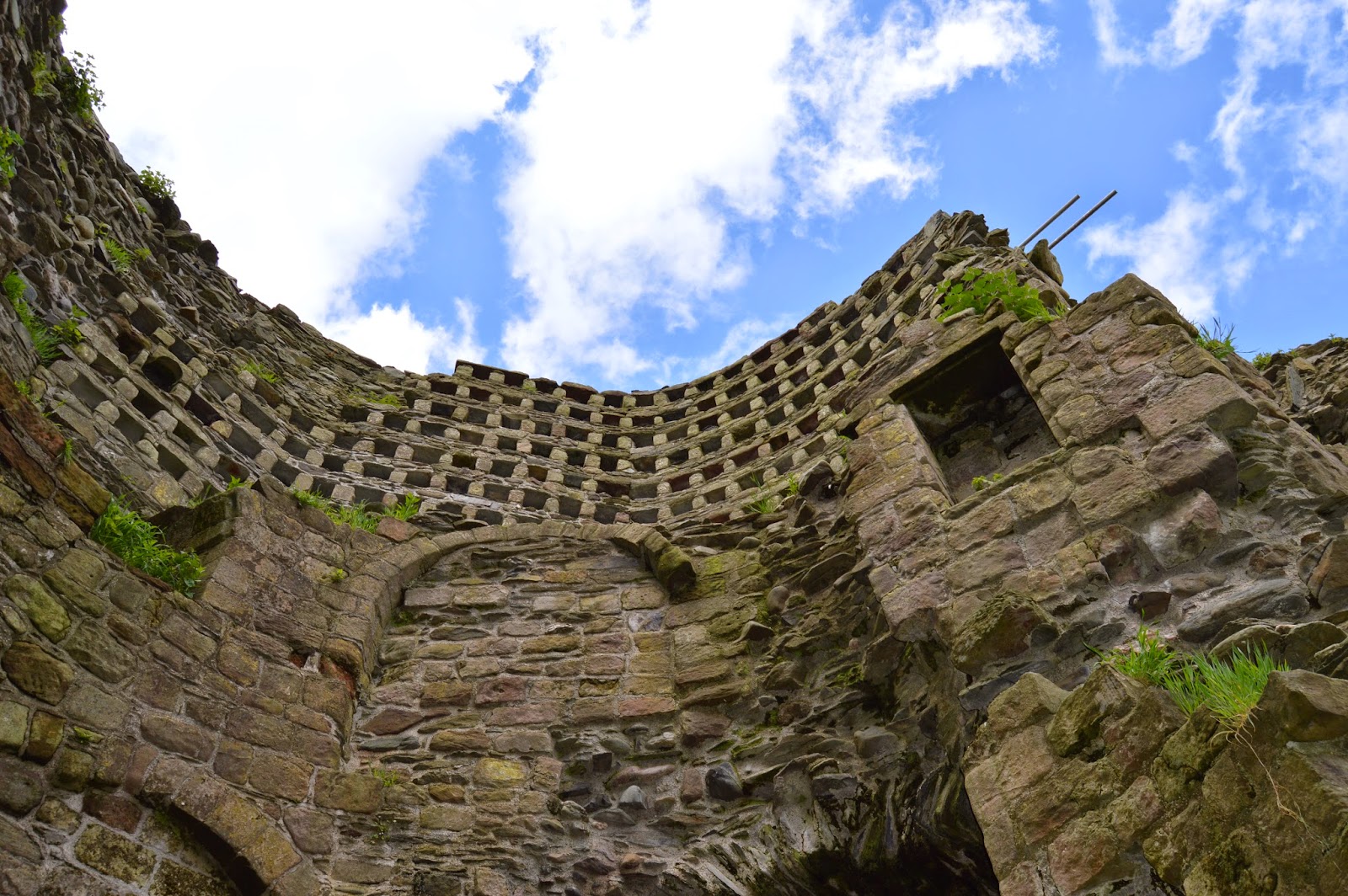After returning from the weekend in Skye, John had to head south on Monday for work. Carl and Dee Dee decided to take a day trip for more castle and whiskey hunting.
On Tuesday the 3 of us decided to take a 5 CalMac ferries tour of the Clyde Islands.
We all packed bags, not knowing if we were going to make it a one or two day trip.
We drove south to Ardrossan to catch the first ferry to Brodick, Arran.
Shortly after taking off from the ferry terminal we hear that they were going to be doing a training exercise with the Royal Marines. The 43 Commando Fleet Protection Group (based at HM Naval Base Clyde) were testing new equipment and training to board the moving ferry from the smaller boats. It was quite an amazing site to see.
After all of the excitement we arrived in port in Brodick.
We stopped at a few places to pick up some souvenirs.
Isle Of Arran Cheese Shop and Isle of Arran Brewery
We then headed to the Brodick Castle where we did a tour of the castle and the gardens.
Brodick Castle stands on a south-east facing slope above the north side of Brodick Bay and under the shadow of Goatfell, which rises behind it. It can best be described as a strategically important castle developed over four centuries between the 1200s and the 1600s, with an 1800s stately home wrapped around it.
We then headed to our next ferry port stopping at the ruins of Lochcranza Castle along the way
The castle that was originally built in the 1200s for the MacSweens. In 1306 Lochranza Castle is said to have been the spot at which Robert the Bruce landed on his return from Ireland, en route to his successful bid for the Scottish Crown. It was certainly in the possession of his grandson when he became King Robert II of Scotland in 1371. It subsequently saw use as a royal hunting lodge.
We got on our next ferry from Lochranza to Cloanaig. From Cloanaig we drove to Tarbert, where we decided to find a room for the night. We found rooms at the Moorings B&B.
(you can see the ruins of the Tarbert Castle in the upper right behind the house.)
Rooms with great views.
Andrew, the owner gave us some suggestions for dinner. We decided on The Starfish Restaurant/Gallery.
We were not disappointed. We all shared the "Haggis Stac" starter (haggis, black pudding and goats cheese with a red wine jus). We were all blown away with how delicious it was. We were so excited that we forgot to take a picture of it first!
The rest of our meal was fabulous as expected, the seafood was so delicious and very fresh coming right out of Loch Fyne.
The next morning we decided to hike up the hill behind our B&B to the Tarbert Castle ruins. When we got to the top of the hill we found a flock of Hebridean black sheep.
Tarbert Castle was a strategic royal stronghold during the Middle Ages and one of three castles at Tarbert. King Edward II of England handed control of the castle to the Scottish King John II de Balliol in 1292. A fortified structure was built in Tarbert during the 13th century. It was reinforced with the addition of an outer bailey and towers in the 1320s by Robert the Bruce, to protect it against the Lords of the Isles. A tower house was added in the 16th century, which is the most noticeable part of the remains today.
The view from the top was an amazing view of the harbour and the village.
Stunning views from the Tarbert ferry terminal
Our next ferry was from Tarbert to Portavadie.
We then had to drive around the peninsula to get to the next port, Colintraive.
We stopped at the Tighnabruaich Viewpoint to take in the sights of Loch Riddon and Kyles of Bute.
We found these Highland Coos along the way waiting for us to take their picture.
We continued on to the Colintraive ferry terminal where we took the 5 minute ferry ride to Rhubodach. From Rhubodach we drove down to Rothesay, stopping briefly in Port Bannatyne.
We then visited the Rothesay Castle.
The castle has been described as "one of the most remarkable in Scotland", for its long history dating back to the beginning of the 13th century, and its unusual circular plan. The castle has a huge curtain wall, strengthened by four round towers and surrounded by a broad moat. Built by the Stewart family, it survived Norse attacks to become a royal residence.
I know this is a bit strange to have pictures of toilets on my blog but these are no ordinary facilities. At the Rothesay Ferry Terminal are Victorian Toilets. They were built in
1899 during Rothesay’s hey-day as a holiday resort. The gents lavatory, a most unusual survivor of the Victorian era, was always intended to impress. The interior is impressive with walls entirely clad in decorative ceramic tiles, ornately patterned in rows. The floors are designed with ceramic mosaic, with the crest of the Royal Burgh of Rothesay at the entrance.
These are still functioning facilities, but are open to the public for tours. They do ask for a donation of 40p per person to help maintain them. (The attendant will make sure its clear so that women can have a peek and take pictures.)
We then caught the ferry back to Wemyss Bay and drove back to Helensburgh.
The next day, Carl and Dee Dee set off on an another adventure. A road/ferry trip to Oban and Isle of Mull.
CJ got the day and night to herself to catch her breath and relax for a few hours before they all returned on Friday. We decided to stay local and have dinner in Helensburgh at our favorite Italian restaurant, Mira Mare.
It was a hit and we had a fabulous dinner followed by limoncello.
(I'll blog more later on a few of our favorites things in Helensburgh.)
Saturday morning we got up and drove to Berwick-upon-Tweed. It is the northernmost town in England, on the east coast at the mouth of the River Tweed. It is situated 2½ miles south of the Scottish border. The town is surrounded by walls that were built in the early 14th century under Edward I, following his capture of the city from the Scots. When complete they stretched 2 miles in length and were 3 feet 4 inches thick and up to 22-feet high, protected by a number of towers, up to 60-feet tall.
The three bridges in Berwick-Upon-Tweed
The low stone bridge with 15 arches of varying height and width, completed in 1634.
The concrete span known as the Royal Tweed completed in 1928.
The Railway’s Royal Border with its 28 soaring arches, completed in 1850.
We spent the night at a Ceilidh.
(a traditional Gaelic social gathering, which usually involves playing Gaelic folk music and dancing.)
We got up the next morning and continued to head south stopping at the Lindisfarne Causeway.
The Holy Island of Lindisfarne is a tidal island off the northeast coast of England. It is a tidal island, access is by a paved causeway which is covered by the North Sea twice in every 24 hour period.
Obiviuosly we didnt get over to the island on this trip, but we will add that to our "Bucket List"
We continue south to our friends Tony and Angie and the Crown Inn Higham. We had a great time hanging in the pub with them, so much that we forgot to get a group photo of the 6 of us.
You know its a good time when this bird shows up at the pub!
The next day we headed back North and Carl and Dee Dee headed to London to spend a few days exploring before heading back to the states. We had a great time with the Bryns and look forward to their next visit. (Which I think they are already starting to think about!)
We are hoping to get the next blog out shortly, (I know we say that everytime) with pictures and adventures from our visit in June with John's parents.
Cheers!
John and CJ


























































































No comments:
Post a Comment